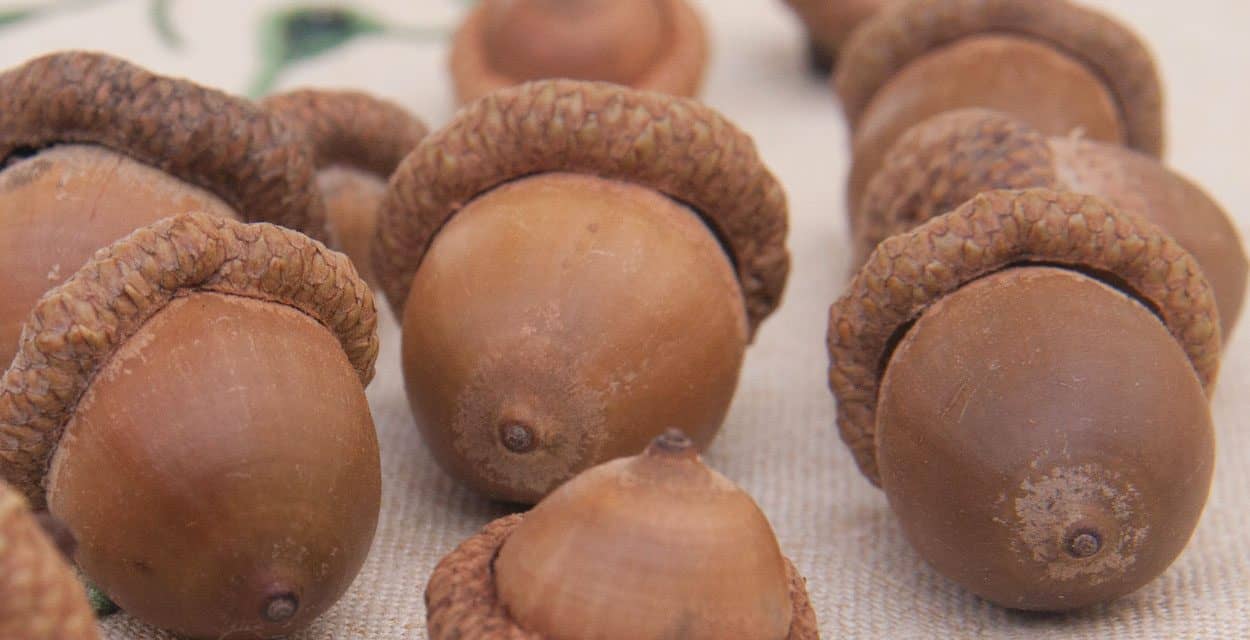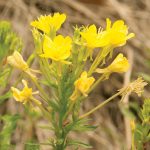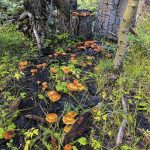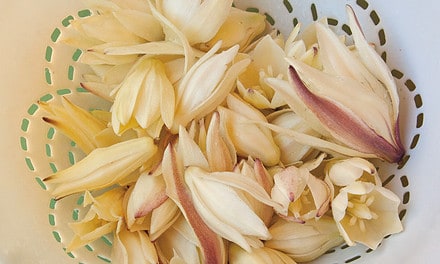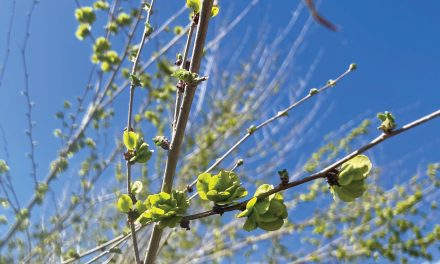Words and Photos by Ellen Zachos
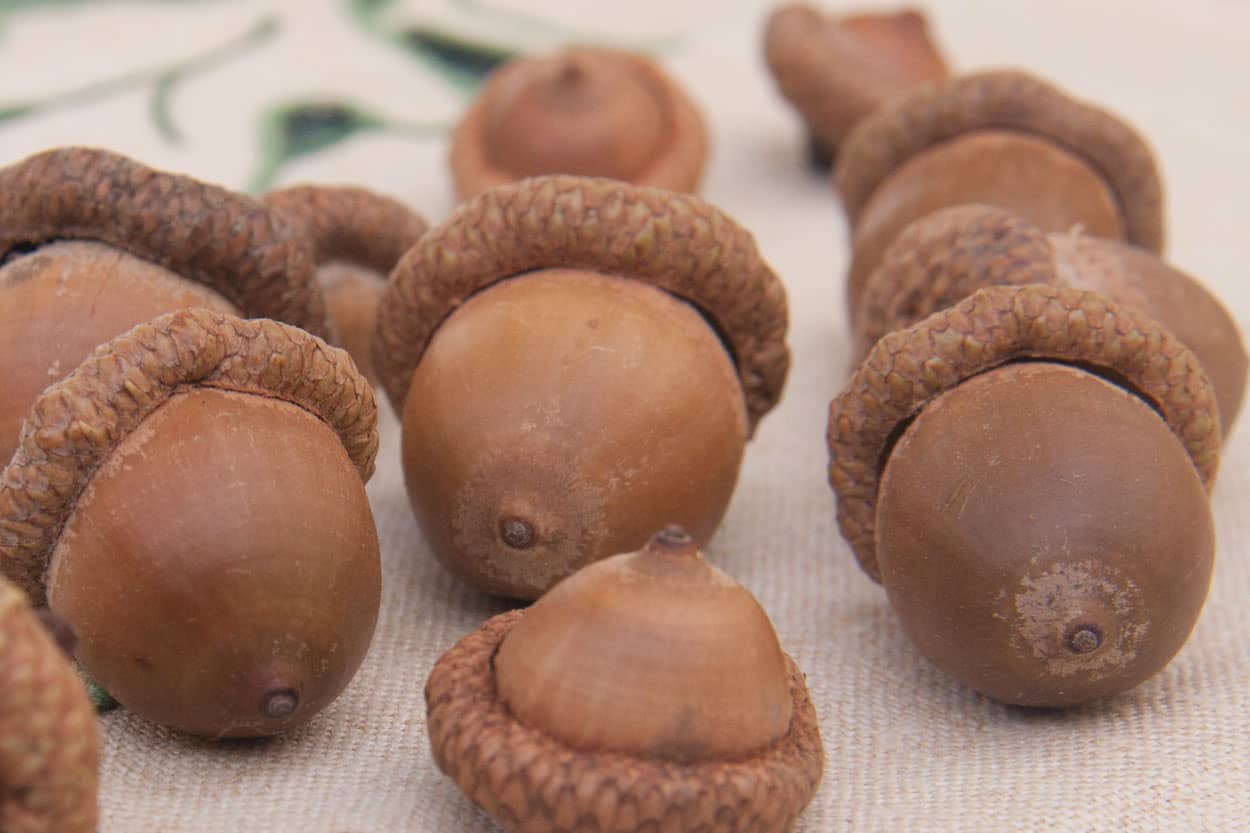
Some acorns fall from the trees in late summer or early fall with their caps attached. These nuts are not good eating. A healthy nut will separate from its cap when it falls.
Sooner or later, almost every forager gathers acorns. They’re an excellent source of starch and fat (two things that aren’t always easy to forage for), they’re available almost everywhere, and they are a versatile, delicious wild food. But is it really worth the trouble of collecting, shelling, leaching, and grinding the nuts? Yes. Yes, it is.
The characteristic lobed leaves of the oak tree make it easy to identify, and all acorns are safe to eat when properly processed. Some people prefer white oak acorns to red oak acorns (white oak acorns are rumored to be sweeter), but I suggest you forget about the species and gather the largest acorns you can find. The most labor-intensive part of processing acorns is the shelling. If you can gather fifty large acorns instead of a hundred small acorns, you’ll get the same amount of nut meat for a lot less labor.
Collect your acorns as soon as they’ve fallen from the trees, and discard any nuts with a small hole in them. This is the exit hole of the oak weevil larva, which has been feeding on the nut all summer. When acorns fall to the ground in autumn, the larva chews its way out of the nut and pupates in the soil, emerging the following year as a full-grown weevil, which then lays its eggs inside a young acorn.
Acorn shells are thin and easy to crack, and you can shell them a few at a time by placing the nuts between two dish towels and cracking them with a rubber mallet. You might also consider a Davebilt nutcracker. It isn’t cheap, but it’s well worth it if you’re going to process acorns on a regular basis.
Shelled acorns must be leached of their tannins before you eat them. Not only do the tannins in unleached acorns taste bitter, but in large amounts, they reduce the efficiency with which your intestines absorb nutrition. Before leaching your acorns, taste an unleached nut. Yes, it will be bitter, but it will give you a baseline flavor so you can monitor your progress as you leach your acorns. Hot-water leaching is the simplest method for leaching acorns. Fill a large pot one-third full with shelled nuts, then cover them with an equal volume of water. Bring the water to a boil, and boil until the water turns dark brown. Pour off the water, and repeat the process multiple times.
Some foragers say to repeat the leaching process until the water remains clear, but rather than rely on the color of the water, rely on your taste buds. Taste an acorn after the third or fourth change of water. When there’s no trace of bitterness, your nuts are leached. Depending on the acorns, this may be as few as four or five changes of water or as many as fifteen. You may also read that acorns should be moved from one pot of boiling water to another, rather than out of boiling water into cold water that is then brought to the boil. Some foragers swear that cold water sets the tannins in the nuts, making them permanently bitter, but I have not found this to be true.
Hot leached acorns make an excellent stuffing ingredient, a beautiful baklava filling, and a tasty falafel base. They also make for a wonderful soup, hearty and thick on an autumn evening.
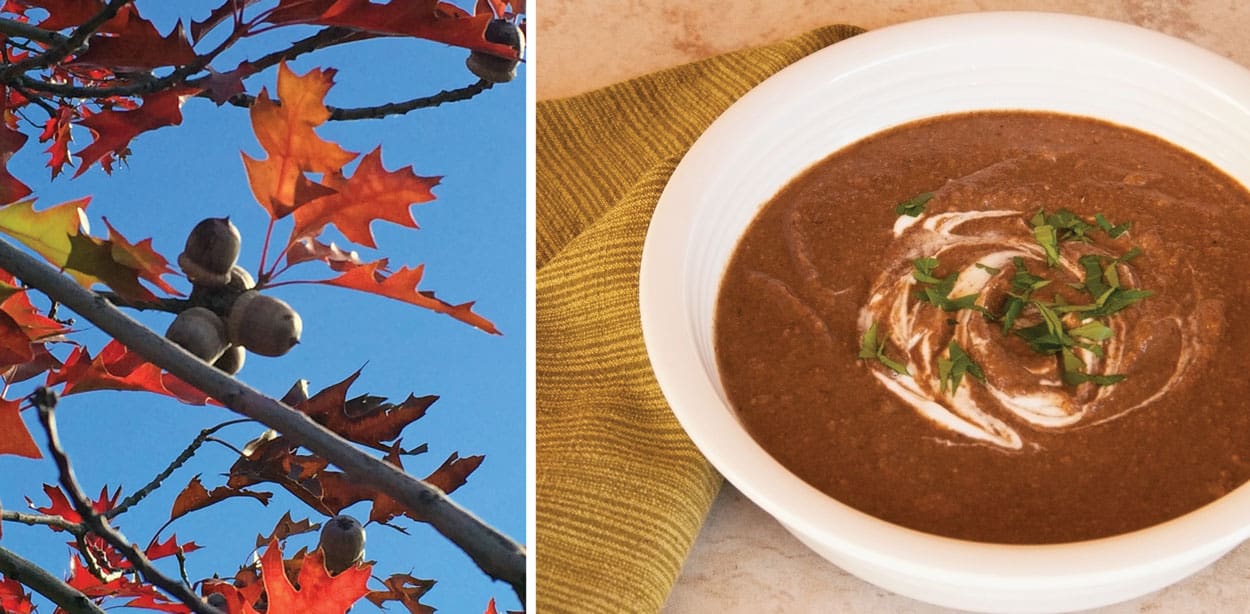
Acorn Mushroom Soup
Ingredients
- 1 1/2 cups acorn pieces shelled and leached
- 1 carrot peeled and chopped
- 1 celery stalk chopped
- 1 medium onion chopped
- 2 tablespoons butter or oil
- 1/4 cup fresh mushrooms
- 2 bay leaves
- 1/3 cup sherry or white wine
- 4 cups chicken or mushroom stock
- Salt to taste
- 1/2 cup nonfat Greek yogurt
- Chopped parsley to garnish
Instructions
- Sauté the carrot, celery, and onion in the butter (or oil) until they soften. Add mushrooms and acorns, and stir to combine. Sauté for another few minutes.
- Add the sherry or wine, bay leaves, and stock, and simmer for an hour, covered. Let the soup cool, then purée mixture in a blender, and add salt to taste. Reheat soup, and use additional stock to thin the mixture, if necessary.
- Remove soup from heat and stir in yogurt, then top with chopped parsley and serve.

Ellen Zachos
Ellen Zachos lives in Santa Fe and is the author of eight books, including the recently released The Forager's Pantry. She is the co-host of the Plantrama podcast (plantrama.com), and writes about wild foods at backyardforager.com. Zachos offers several online foraging courses at backyard-forager.thinkific.com.

